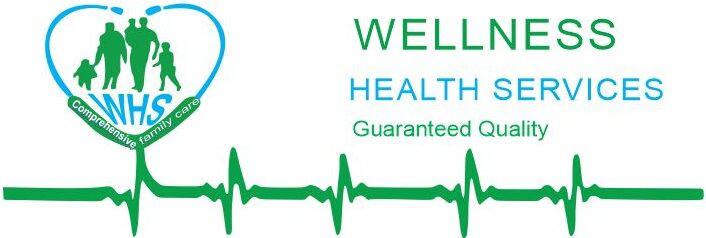🩺 The Hidden Hope Behind the Healing Hands
When someone hears the word cancer, the world often stops. In that silence—between diagnosis and decision—many patients whisper the same question:
“Is there something else I can do to help my body heal?”
That question has led millions to explore complementary and integrative therapies—from acupuncture and yoga to herbs and meditation.
But amid hope and hype, what does the science actually say?
🔬 Complementary vs. Alternative: The Life-and-Death Difference
The first truth is crucial:
Complementary therapies are used alongside standard cancer treatment—such as chemotherapy, surgery, and radiation—to ease symptoms and improve quality of life.
Alternative therapies, on the other hand, are used instead of proven medical treatments—and can be dangerous or even deadly.
According to the National Cancer Institute (NCI) and National Center for Complementary and Integrative Health (NCCIH), no alternative therapy has been proven to cure or prevent cancer. However, several complementary approaches have strong scientific evidence supporting their use for symptom relief, stress reduction, and improved well-being.
💆♀️ What Works: Evidence-Backed Therapies That Help
- Acupuncture & Acupressure: Calming Nausea and Pain
Clinical trials reviewed in the ASCO–SIO Joint Guideline (2022) show that acupuncture and acupressure can significantly reduce:
- Chemotherapy-induced nausea and vomiting (CINV)
- Cancer-related pain and peripheral neuropathy
These effects occur when used alongside standard antiemetic and pain regimens—not in isolation.
In other words: acupuncture complements chemotherapy; it doesn’t replace it.
- Mind–Body Therapies: Peace Within the Storm
Stress, fear, and insomnia are often hidden symptoms of cancer.
Mindfulness-based stress reduction (MBSR), meditation, and yoga have been shown in randomized clinical trials to:
- Reduce anxiety and depression
- Improve sleep quality
- Enhance overall quality of life
The NCCIH 2023 digest reports that even short daily mindfulness or breathing exercises can lower cortisol levels and improve coping capacity.
These practices cost almost nothing—and empower patients to reclaim control in a time of uncertainty.
- Massage, Hypnosis & Music Therapy: Soothing the Body and Mind
The SIO–ASCO pain guideline found moderate-to-strong evidence that:
- Massage therapy reduces musculoskeletal and treatment-related pain
- Hypnosis can ease procedural pain and anxiety
- Music therapy lifts mood and enhances relaxation during chemotherapy sessions
Hospitals worldwide, from Memorial Sloan Kettering Cancer Center to OSUCCC–James, now integrate these services within oncology wards.
🍵 The Caution Zone: Herbs and Supplements
While natural doesn’t mean harmless, many patients still turn to herbal remedies.
The Memorial Sloan Kettering “About Herbs” database highlights important examples:
- Ginger may reduce acute vomiting during chemotherapy—but can increase bleeding risk if combined with anticoagulants.
- Turmeric (Curcumin) shows laboratory anti-inflammatory effects but limited clinical evidence.
- St. John’s Wort can dangerously interfere with chemotherapy drug metabolism.
Rule of thumb:
👉 Always disclose supplements to your oncologist or pharmacist.
👉 Never replace prescribed medication with herbs or vitamins.
🌈 What to Avoid: When “Natural” Becomes Dangerous
The NCI warns against unproven alternative therapies such as:
- “Cancer-curing” diets or extreme fasting programs
- Coffee enemas or ozone therapy
- Supplements promising “immune detox” or “tumor reversal”
These not only fail to cure cancer—they can delay effective treatment, worsen nutrition, and increase mortality risk.
❤️ The Future Is Integrative, Not Alternative
Cancer treatment is evolving toward integrative oncology—a model that blends the best of science and holistic care.
According to Dr. Jun Mao (Memorial Sloan Kettering),
“Integrative medicine is not about replacing chemotherapy—it’s about helping patients live better while they fight.”
Across the world, oncology centers are building programs that combine:
- Standard treatment
- Nutrition counseling
- Mind-body practices
- Evidence-based complementary therapies
This approach honors both biology and humanity—recognizing that healing involves body, mind, and spirit.
🌟 Take-Home Message
| Effective & Evidence-Supported | Use With Caution / Discuss With Doctor | Avoid Completely |
| Acupuncture, massage, yoga, meditation, mindfulness, hypnosis, music therapy | Ginger, turmeric, omega-3 supplements | “Miracle” cures, coffee enemas, ozone therapy, high-dose vitamin infusions, anti-cancer diets that replace treatment |
💡 Final Thought
Science has shown that while alternative treatments can cost lives, complementary therapies—when used wisely—can restore dignity, comfort, and peace.
Cancer care isn’t just about killing cells.
It’s about healing the whole person.
🔗 References (Scientific Sources)
- Greenlee H et al. Integrative Medicine for Pain Management in Oncology: Society for Integrative Oncology–ASCO Guideline. J Clin Oncol. 2022.
- NCCIH (2023): Mind and Body Approaches for Cancer Symptoms and Treatment Side Effects – What the Science Says.
- NCI (2024): Complementary and Alternative Medicine (CAM) in Cancer Care.
- Memorial Sloan Kettering Cancer Center: About Herbs Database (2024 update).
- Mao JJ et al. Integrative Oncology: Patient-Centered, Evidence-Based Cancer Care. ASCO Education Book. 2023.

